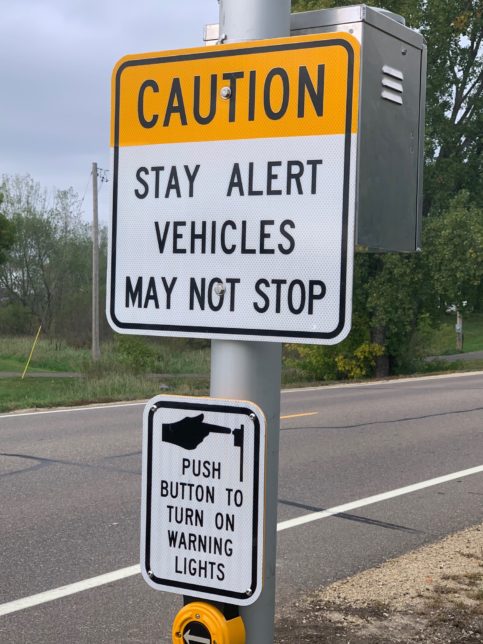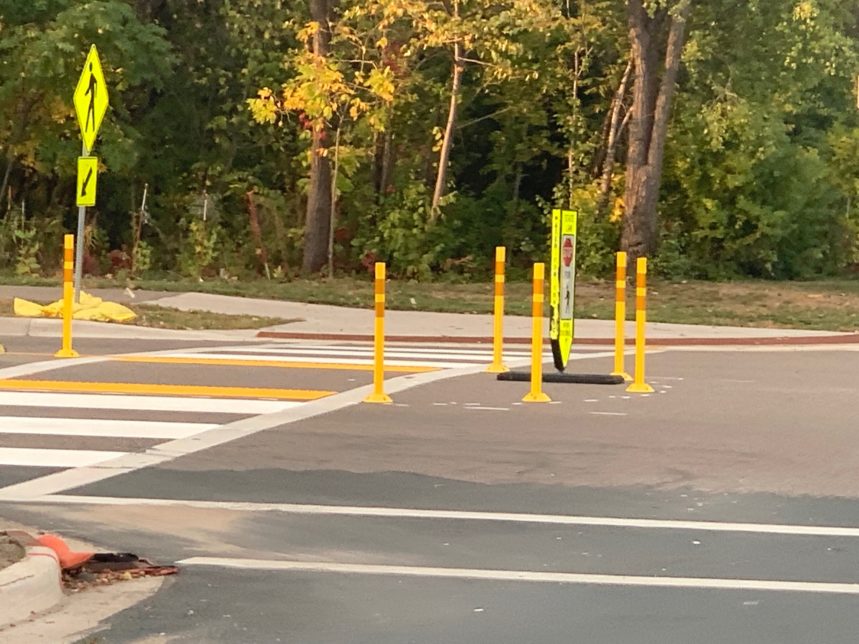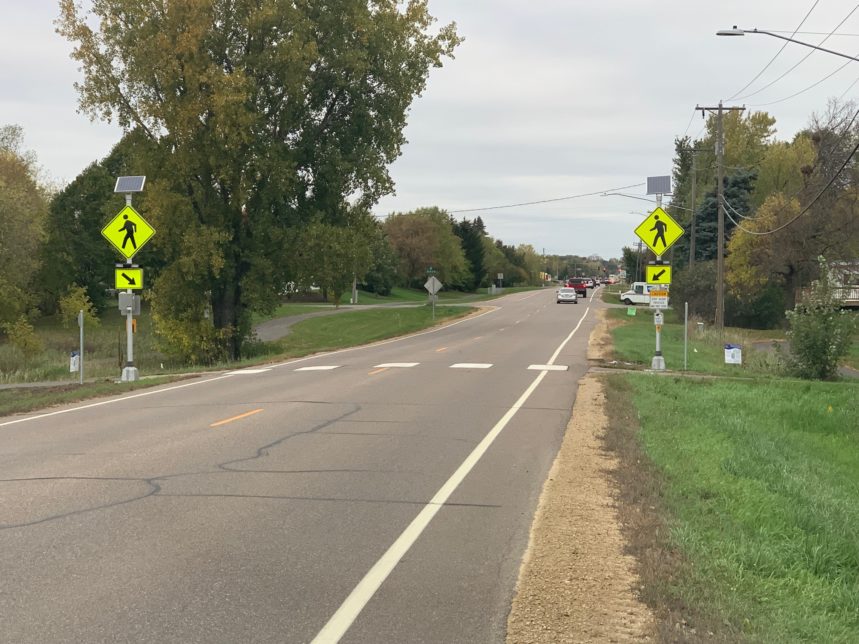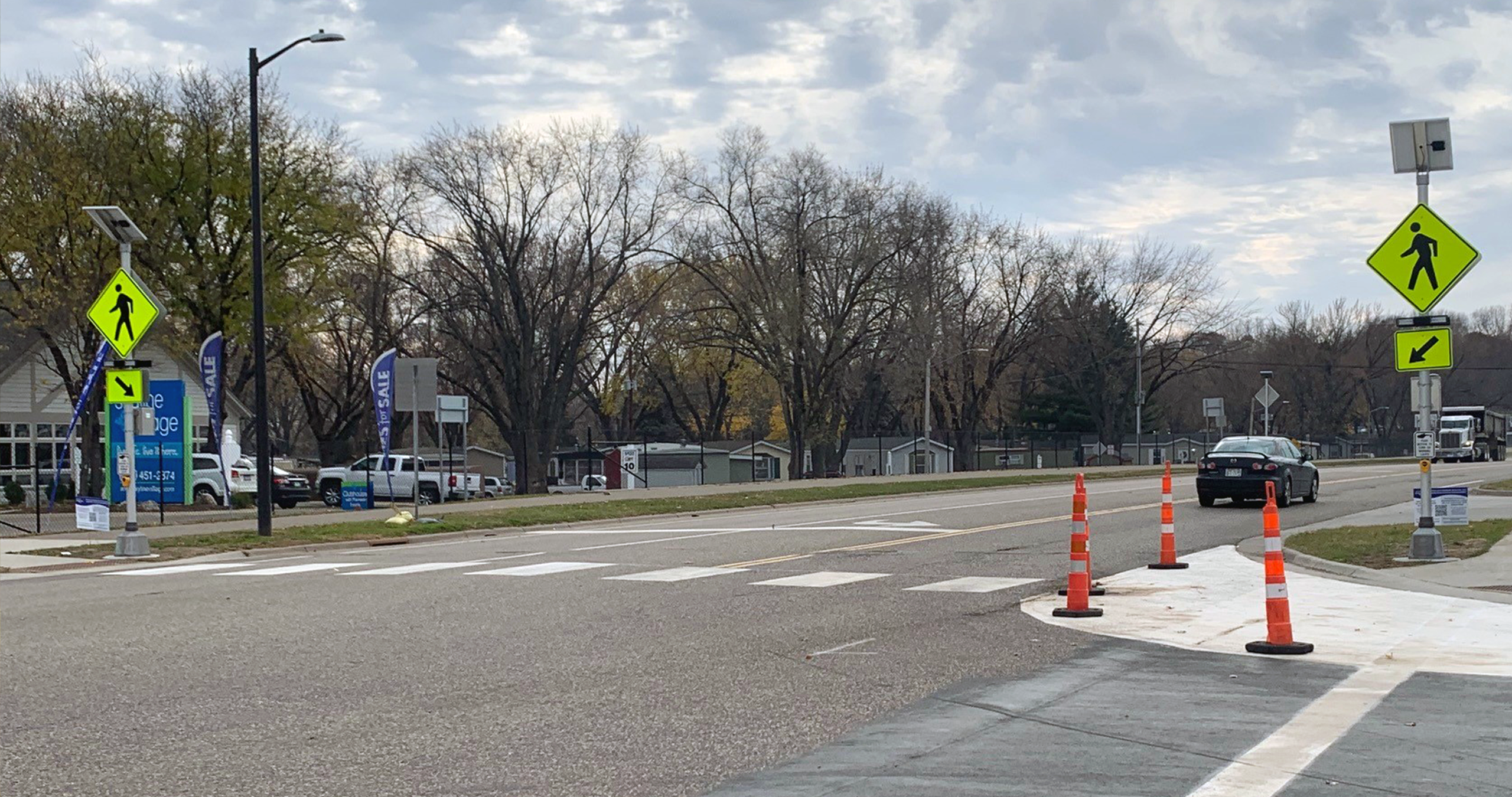Cities and counties desire right-fit solutions for the unique roadway crossings on their systems to better balance the multi-modal use of the transportation networks and continuously improve safety for all users. National pedestrian crossing design standards are broad and challenging for implementation of consistent, yet targeted solutions.
To address this challenge in the design process, SRF’s Chris Brown, John Maczko, and Tom Sachi have developed a solution-oriented process in partnership with Dakota County to help identify customized crossing improvements based on traffic and roadway data, individual city or county standards, and local crossing behavior.
This valuable exercise evaluates varying roadway types, annual average daily traffic (AADT) ranges, and vehicle speeds based on a combination of the latest research, guidance, and best practices across Minnesota and the United States. The output of this analysis provides the end user with simple, concise, and realistic crossing enhancements for their specific conditions.
This resource is intended to help bridge the gap between high-level national tools, such as the FHWA’s Safe Transportation for Every Pedestrian (STEP) guide, and local crossing patterns to accommodate suburban, rural, and urban contexts. In addition, its developers hope to provide more transparency for staff, elected officials, and the broader public during the decision-making process as a community considers crossing improvements.
If you want to learn more about how SRF can guide your community’s crossing needs, contact Chris Brown, Tom Sachi or John Mackzo.
“SRF provided leadership and collaboration with Dakota County and city staff on our Pedestrian Crossing Safety Assessment aimed at developing guidance for review and selection of approaches to enhancing crossings in an effective and consistent manner county wide. The consultant team knew the importance of both research and field reviews as they developed recommendations for the focused locations and ultimately practical guidance both county staff and local agencies can use for projects and future pedestrian crossing concerns.”
Kristi Sebastian, Dakota County Traffic Engineer




